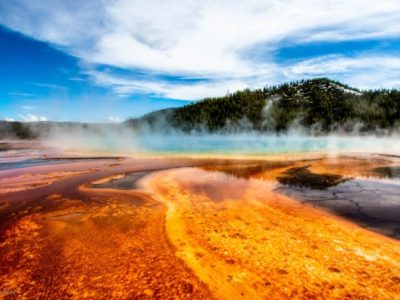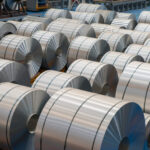Geothermal energy is a renewable energy source that provides a continuous, uninterrupted heat supply below the earth’s surface. Over 20 countries use geothermal energy, and the United States is the largest producer of geothermal energy globally.
Geothermal power plants use underground steam or hot water to run turbines that generate electricity. Like most volcanoes, active geothermal resources are typically located along major tectonic plate boundaries. When magma (magma is known as lava when it is above ground) is near the earth’s surface, it heats groundwater trapped in porous rock or water running along fractured rock surfaces and fault lines. These reservoirs run deep underground and are usually located near volcanoes, hot springs, or geysers.
Geothermal power plants typically drill deep wells (perhaps a mile) into underground reservoirs to tap steam and extremely hot water. As you go deep below the earth’s crust, the temperature increases at an average rate of approximately 1°F for every 70 feet in depth.
But, geothermal energy isn’t confined to large power plants. Just as residential and commercial building owners may opt to install solar panels to convert to renewable energy, they could decide to install geothermal systems. In this case, geothermal heat exchange systems are buried in the shallow ground next to a home or office building to provide heating and cooling.
And here is the new twist. The start-up company Enerdrape has developed technology to turn underground infrastructures into renewable energy sources. The product is a modular, easy-to-install, prefabricated geothermal panel to be installed on the walls of underground infrastructure such as underground parking garages or subways.
The panels collect warmth from the surrounding earth and the residual warmth created by cars and trains. A heat pump transfers the thermal energy to the building above ground. On hot days, warmth is circulated back into the earth to provide low-energy cooling.
Enerdrape panels are currently being pilot-tested at a parking lot in Lausanne’s Sébeillon district, where they should be able to supply up to a third of the energy needed to heat approximately 60-unit apartment building above.








